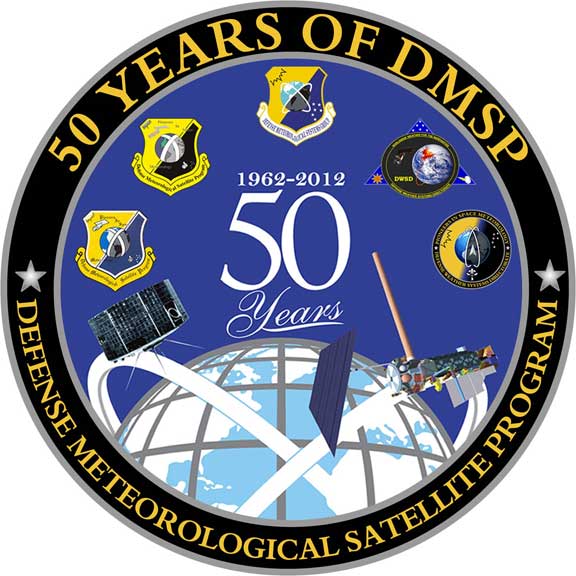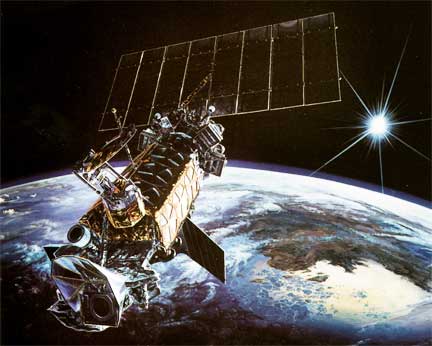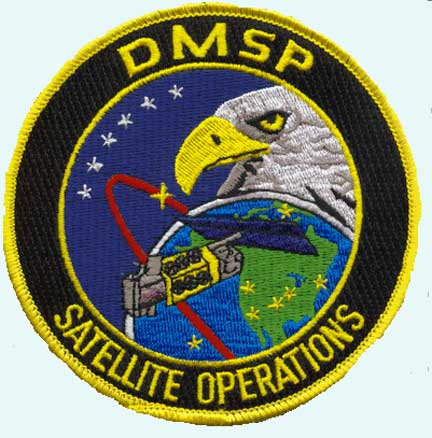 [SatNews] The Defense Weather Systems Directorate is celebrating 50 years of the...
[SatNews] The Defense Weather Systems Directorate is celebrating 50 years of the...
...Defense Meteorological Satellite Program. On August 23, 1962 the National Reconnaissance Office's classified Program 417 launched its first successful low altitude cloud imagery satellite into space and began a new era of military satellite weather. In the mid 1960's, the program was transferred to the Air Force Systems Command, and today the program continues under the leadership of the Air Force's Space and Missile Systems Center. The program has transformed over the years from a spin stabilized satellite with a video camera, to a robust 3-axis stabilized spacecraft with precision sensors. Currently, DMSP holds the record for the longest running satellite program in SMC history.

Artistic rendition of DMSP.
Image courtesy of Lockheed Martin Corporation.
One of the keys to DMSP's long history of success is its supportive community of experts. The primary command and control of the satellite is jointly managed by the National Oceanographic and Atmospheric Administration (NOAA) and the Air Force 50th Operations Group Detachment 1. Both organizations operate out of the Satellite Operations Control Center in Suitland, Maryland.
 Operations are also supported by a back-up facility located at Schriever Air Force Base in Colorado Springs, Colorado, under the leadership of the 6th Space Operations Squadron. All DMSP data is sent to the Air Force Weather Agency for processing, modeling and forecasting. AFWA has a key role in generating and distributing critical DMSP weather products to forces in the field. Data also is sent directly to the Air Force's Navy partners at the Fleet Numerical Meteorology and Oceanographic Center and to NOAA's National Geophysical Data Center. DMSP maintains an effective working relationship with its industry partners. The satellite bus is built by the Lockheed Martin Space System Company in Sunnyvale, California, while sensor support is managed by Northrop Grumman Electronic Systems. The Aerospace Corporation plays a critical role in assisting the government with technical expertise and experience.
Operations are also supported by a back-up facility located at Schriever Air Force Base in Colorado Springs, Colorado, under the leadership of the 6th Space Operations Squadron. All DMSP data is sent to the Air Force Weather Agency for processing, modeling and forecasting. AFWA has a key role in generating and distributing critical DMSP weather products to forces in the field. Data also is sent directly to the Air Force's Navy partners at the Fleet Numerical Meteorology and Oceanographic Center and to NOAA's National Geophysical Data Center. DMSP maintains an effective working relationship with its industry partners. The satellite bus is built by the Lockheed Martin Space System Company in Sunnyvale, California, while sensor support is managed by Northrop Grumman Electronic Systems. The Aerospace Corporation plays a critical role in assisting the government with technical expertise and experience.

